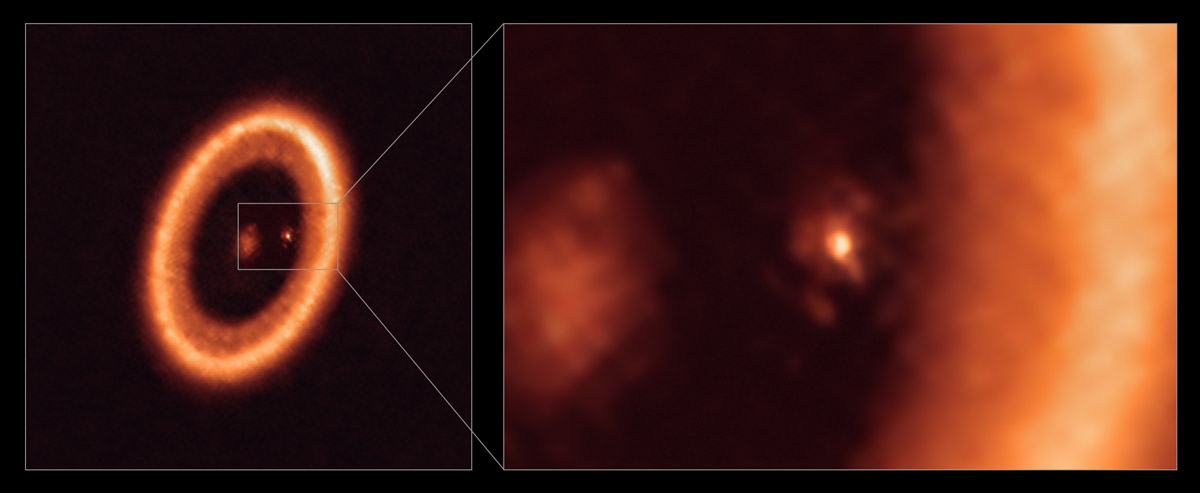Image List
-

This image shows wide (left) and close-up (right) views of the moon-forming disk surrounding PDS 70c, a young Jupiter-like planet nearly 400 light-years away. The close-up view shows PDS 70c and its circumplanetary disk center-front, with the larger circumstellar ring-like disk taking up most of the right-hand side of the image. The star PDS 70 is at the center of the wide-view image on the left. Two planets have been found in the system, PDS 70c and PDS 70b, the latter not being visible in this image. They have carved a cavity in the circumstellar disk as they gobbled up material from the disk itself, growing in size. In this process, PDS 70c acquired its own circumplanetary disk, which contributes to the growth of the planet and where moons can form. This disk is as large as the Sun-Earth distance and has enough mass to form up to three satellites the size of the Moon.
ALMA (ESO/NAOJ/NRAO)/Benisty et al. -

This image shows the PDS 70 system, located nearly 400 light-years away and still in the process of being formed. The system features a star at its center, and at least two planets orbiting it, called PDS 70b (not visible in the image) and PDS 70c (the dot to the right of the star). The planets have carved a cavity in the circumstellar disk (the ring-like structure that dominates the image) as they gobbled up material from the disk itself, growing in size. In this process, PDS 70c acquired its own circumplanetary disk, which contributes to the growth of the planet and where moons can form.
ALMA (ESO/NAOJ/NRAO)/Benisty et al.